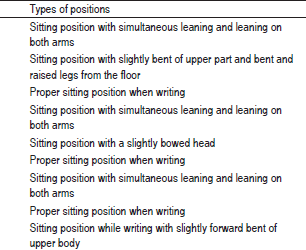Sedentary habits and physical health of secondary school students in online classes during the pandemic COVID-19
DOI:
https://doi.org/10.17532/jhsci.2022.1648Keywords:
Online teaching, sedentary habits, school, COVID-19Abstract
Introduction: Due to the declaration of a state of emergency in the country due to the pandemic COVID-19, the education system was changed to online teaching. The implementation of distance education has led to an increased sedentary lifestyle, decreased physical activity, and increased use of information technologies. The purpose of this study was to analyze the sedentary habits of female students and their physical health during a period of restricted physical activity with reference to online instruction.
Methods: The research was conducted among the first to third grade students of Secondary School Konjic, 45 days after the implementation of online instruction. Students of general secondary school (N = 83), business school (N = 68), and medical school (N = 55) completed the questionnaire after their parents gave their consent.
Results: The total number of students surveyed was 206, with students from all three schools studied participating in online classes for up to 4 hours. Medical school students spend more than 3 hours completing schoolwork, while students at the other two schools spend up to 2 hours. Statistically significant differences in non-use of information technology during free time exist among medical students (p = 0.00). Female medical students reported daily symptoms such as headaches, reactions to the visual organ (dry eye, redness, and tearing), and pain in the fist area (twitching, cramps, and tingling). Statistically significant differences in the occurrence of pain in the upper back and chest girdle occurred in students of business school (p = 0.00) and general high school (p = 0.00) compared to medical students.
Conclusion: Medical students who use information technology the most reported headaches, pain in the fist area, and frequent reactions to the sense of sight (dry eye, lacrimation, and redness). Assuming inappropriate positions during prolonged use of technology may contribute to poor posture.
Downloads

Downloads
Published
Issue
Section
Categories
License
Copyright (c) 2022 Nejra Ćibo, Hana Omerović, Amar Žilić, Zarema Obradović, Đemil Omerović, Edina Tanović

This work is licensed under a Creative Commons Attribution 4.0 International License.










